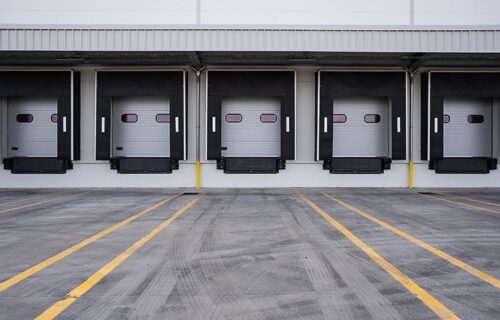Among the trends on the Polish warehouse market expected in 2024 is a moderation in the growth of the vacancy rate and a stabilisation and, in some cases, even a reduction in rental rates, according to experts from consultancy Colliers.
After 2023, in which the logistics and warehousing industry struggled with rising rents and vacancy rates, warehouses are entering the new year with good prospects. Colliers experts expect a stabilisation of rental rates and increased investment activity. The development of electromobility and maritime transport, among others, will have a positive impact on the sector, it was reported
Since the beginning of 2022, the vacancy rate has been on an upward trend – in Q3 2023 it stood at 7.7%. The current value of this indicator has the effect of increasing the competitiveness of the industrial and warehouse space market. It allows tenants to find suitable space more easily. Colliers, however, emphasises that further increases in the vacancy rate could change the nature of the market to be much more preferential for the tenant than for the developer.
“Given that today as much as two-thirds of vacant industrial/warehouse space is in schemes less than two years old, it can be expected that developers will limit the construction of new schemes in order to first focus on filling existing space with tenants. Assuming limited new supply, the vacancy rate in 2024 should not exceed the 10% level. We expect an easing of the upward trend for this rate,” – said senior partner, Logistics and Industrial Space at Colliers, Maciej Chmielewski.
Similarly, both base and effective rents have increased significantly since the beginning of 2022. This was a result of, among other things, rising fuel and building material prices, higher project financing costs and deteriorating investment fund sentiment.
“In 2024, the relatively high availability of already existing industrial and warehouse space may put slight pressure on prevailing rental rates. We expect a smoothing of the upward trend and, in some cases, even a reduction in prevailing rental rates,” added partner, Logistics and Industrial Space at Colliers Jan Barbasiewicz.
In addition, the stabilisation of the economic situation in Poland in 2024 will allow for increased investor activity. During the previous 12 months, Colliers experts observed a weakening in this area. The economic forecasts provide grounds for an improvement in the level of investments, especially in the industrial and logistics space market.
Colliers points to two more factors favouring the warehouse market in Poland – the development of the automotive sector and maritime infrastructure.
In the coming year, we can expect further development of the automotive sector in Poland, especially in the area of electromobility. In 2022. Poland was the world’s second largest producer of batteries for electric cars, after China, in terms of production capacity measured in GWh, according to a PSPA report. […] Warehousing, logistics and industrial space in the Baltic regions can benefit [also] from the development of maritime infrastructure in Poland. In Gdansk, another deep-water quay is currently under construction at the Baltic Hub container terminal, which is expected to be completed in 2024. The expansion of the port in Świnoujście was also confirmed in the final days of 2023. In Gdynia, meanwhile, the construction of an outer harbour is to be completed to enable the handling of Baltmax-rated ocean-going container vessels of up to 430m in length. There are also plans to modernise the port of Elbląg, which could have a significant impact on the activation of the Warmińsko-Mazurskie Voivodeship, according to the report.
In a summary of last year, Colliers pointed out, among other things, that demand for industrial and logistics space decreased significantly. The year-on-year decline was around 30 per cent for both gross and net volumes.
“The large year-on-year decline in demand is due to the high base value. It is worth noting that between 2021 and 2022, warehouse space enjoyed the highest tenant interest in the history of this market, and the current level of demand is comparable to the result recorded in 2020. This means that it is still relatively high,” said Antoni Szwech, an analyst in the Advisory and Market Research Department at Colliers.
Source: Colliers and ISBnews
